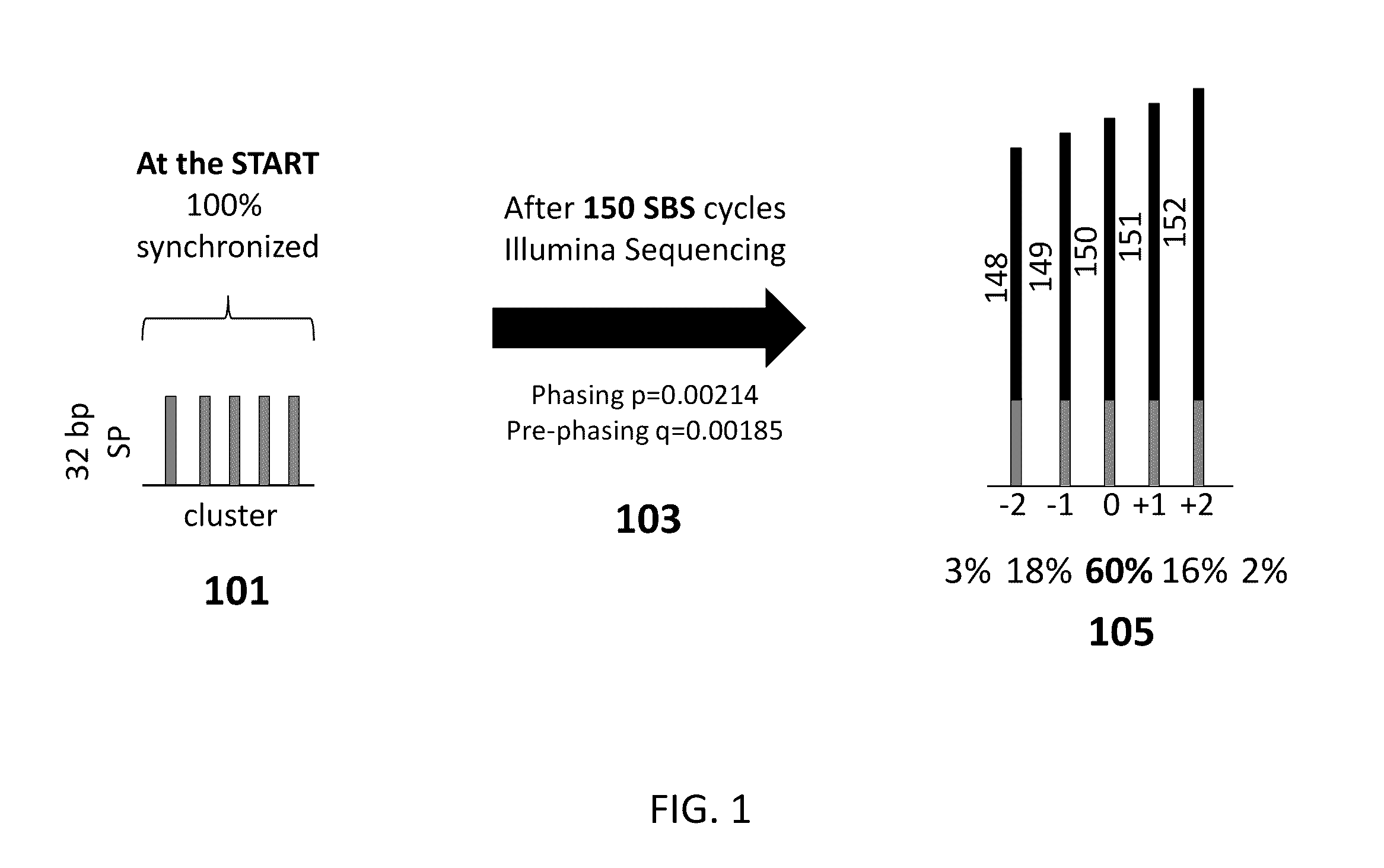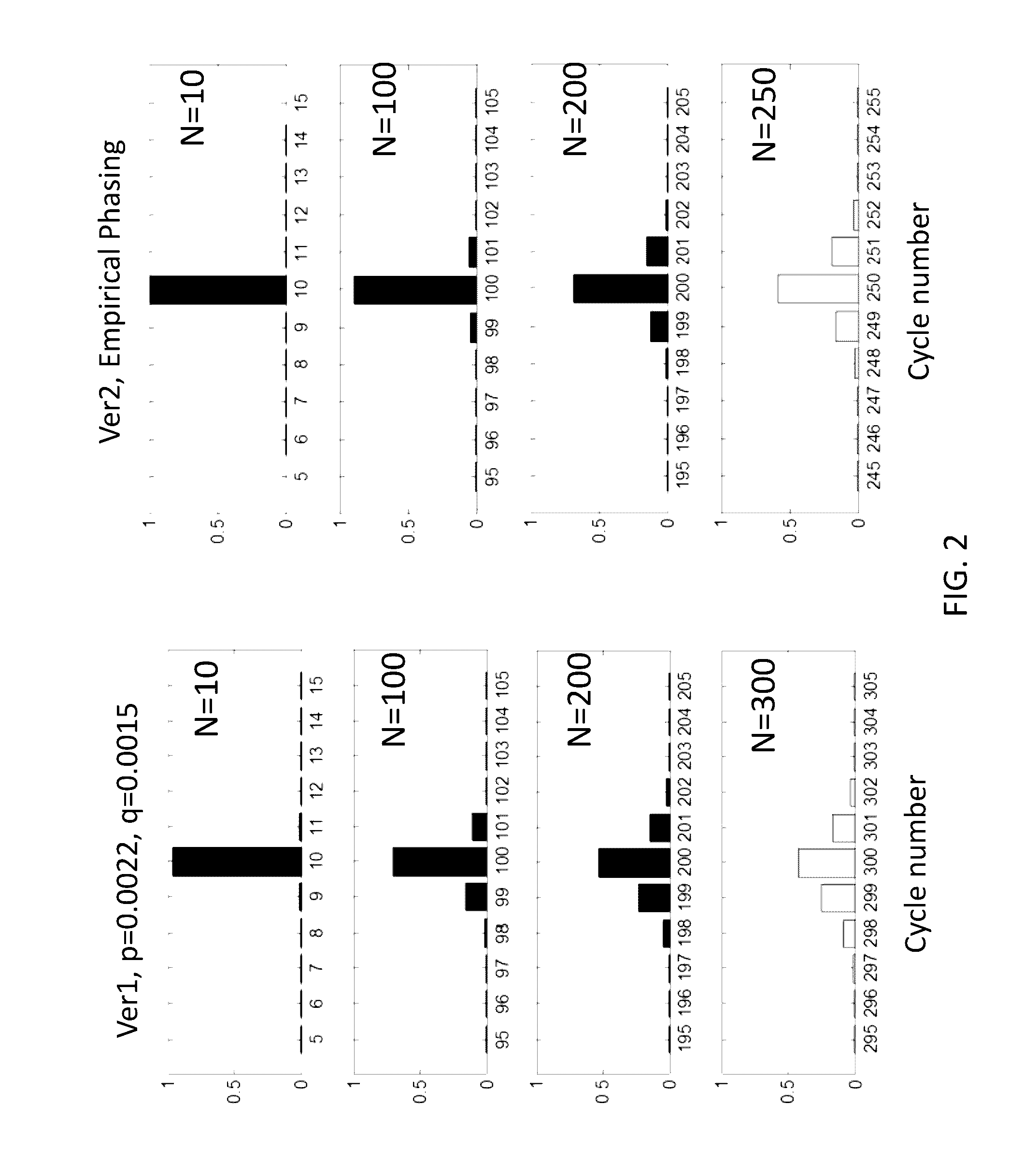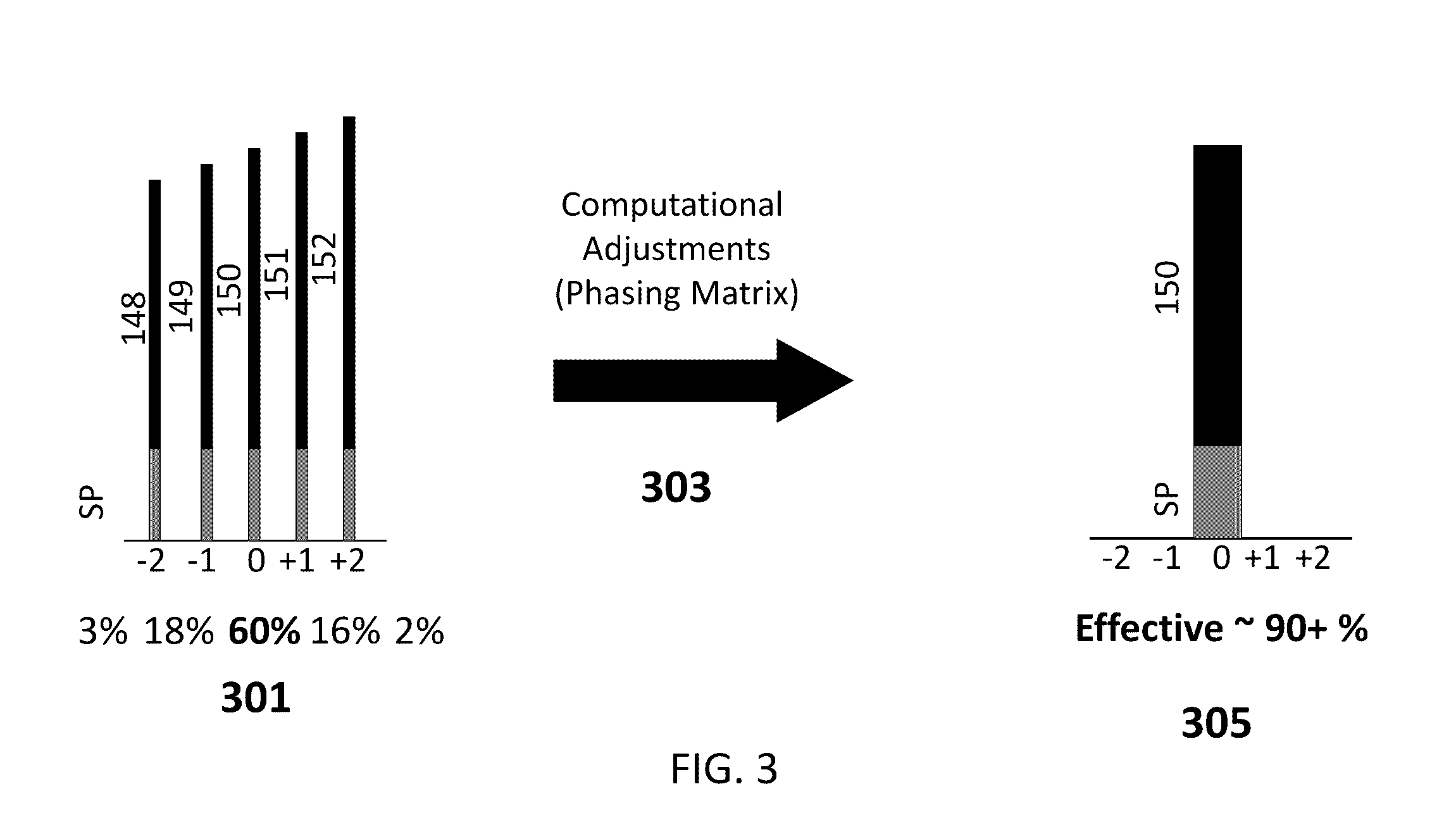Methods for synchronizing nucleic acid molecules
- Summary
- Abstract
- Description
- Claims
- Application Information
AI Technical Summary
Benefits of technology
Problems solved by technology
Method used
Image
Examples
example 1
Inline+S Synchronization Resets Sequencing Strands after 100 Rounds of SBS Sequencing
[0127]FIGS. 10 & 11 depict the results of a synchronization protocol. Briefly, sequencing-by-synthesis (SBS) reactions were performed on a MiSeq sequencing system (Illumina). After 100 rounds of SBS sequencing, the reactions were deblocked, the reactions were primed with apyrase followed by Mix0 at 37 C. Next, 8 inline+S synchronization steps were performed as follows: (-A, -C, -G, -T, -G, -C, -A, -T) to reset the sequencing strands. The synchronization protocol was followed by another 100 rounds of sequencing, followed by an additional 8 inline+S synchronization steps, and an additional 25 rounds of sequencing. FIG. 10 depicts the intensity signal measured for each nucleotide (y-axis) at each step (x-axis). The first inline+S protocol resulted in a 10.2% average intensity increase (A: 11%, C: 8.8%, G: 11.7%, and T: 9.4%), whereas the second inline+S protocol resulted in a 12.3% average intensity in...
example 2
Inline+S Synchronization Resets Sequencing Strands after 110 Rounds of SBS Sequencing
[0128]FIGS. 12 & 13 depict the results of a synchronization protocol. Briefly, sequencing-by-synthesis (SBS) reactions were performed on a MiSeq sequencing system (Illumina). After 110 rounds of SBS sequencing, the reactions were deblocked and the reactions were primed with apyrase followed by Mix0 at 37 C. Next, 8 inline+S synchronization steps were performed as follows: (-A, -C, -G, -T, -G, -C, -A, -T) to reset the sequencing strands. The synchronization protocol was followed by 40 rounds of sequencing. The sequencing and synchronization protocol was then repeated starting from the opposite end of the sequencing product. FIG. 12 depicts the intensity signal measured for each nucleotide (y-axis) at each step (x-axis). The first inline+S protocol resulted in a 12.2% average intensity increase (A: 15.0%, C: 8.2%, G: 17.0%, and T: 7.5%), whereas the second inline+S protocol resulted in an 11.5% averag...
example 3
Inline+S Synchronization Decreases the Error Rate of SBS Sequencing
[0129]FIG. 14 depicts decreased error rates after implementing a synchronization protocol. Briefly, sequencing-by-synthesis (SBS) reactions on a PhiX sequencing control were performed using a MiSeq sequencing system (Illumina). After 110 rounds of SBS sequencing, the reactions were deblocked and the reactions were primed with apyrase followed by Mix0 at 37 C. Next, 8 inline+S synchronization steps were performed as follows: (-A, -C, -G, -T, -G, -C, -A, -T) to reset the sequencing strands. The synchronization protocol was followed by 40 rounds of sequencing. The sequencing and synchronization protocol was then repeated starting from the opposite end of the sequencing product.
PUM
| Property | Measurement | Unit |
|---|---|---|
| Fraction | aaaaa | aaaaa |
| Length | aaaaa | aaaaa |
Abstract
Description
Claims
Application Information
 Login to View More
Login to View More - Generate Ideas
- Intellectual Property
- Life Sciences
- Materials
- Tech Scout
- Unparalleled Data Quality
- Higher Quality Content
- 60% Fewer Hallucinations
Browse by: Latest US Patents, China's latest patents, Technical Efficacy Thesaurus, Application Domain, Technology Topic, Popular Technical Reports.
© 2025 PatSnap. All rights reserved.Legal|Privacy policy|Modern Slavery Act Transparency Statement|Sitemap|About US| Contact US: help@patsnap.com



